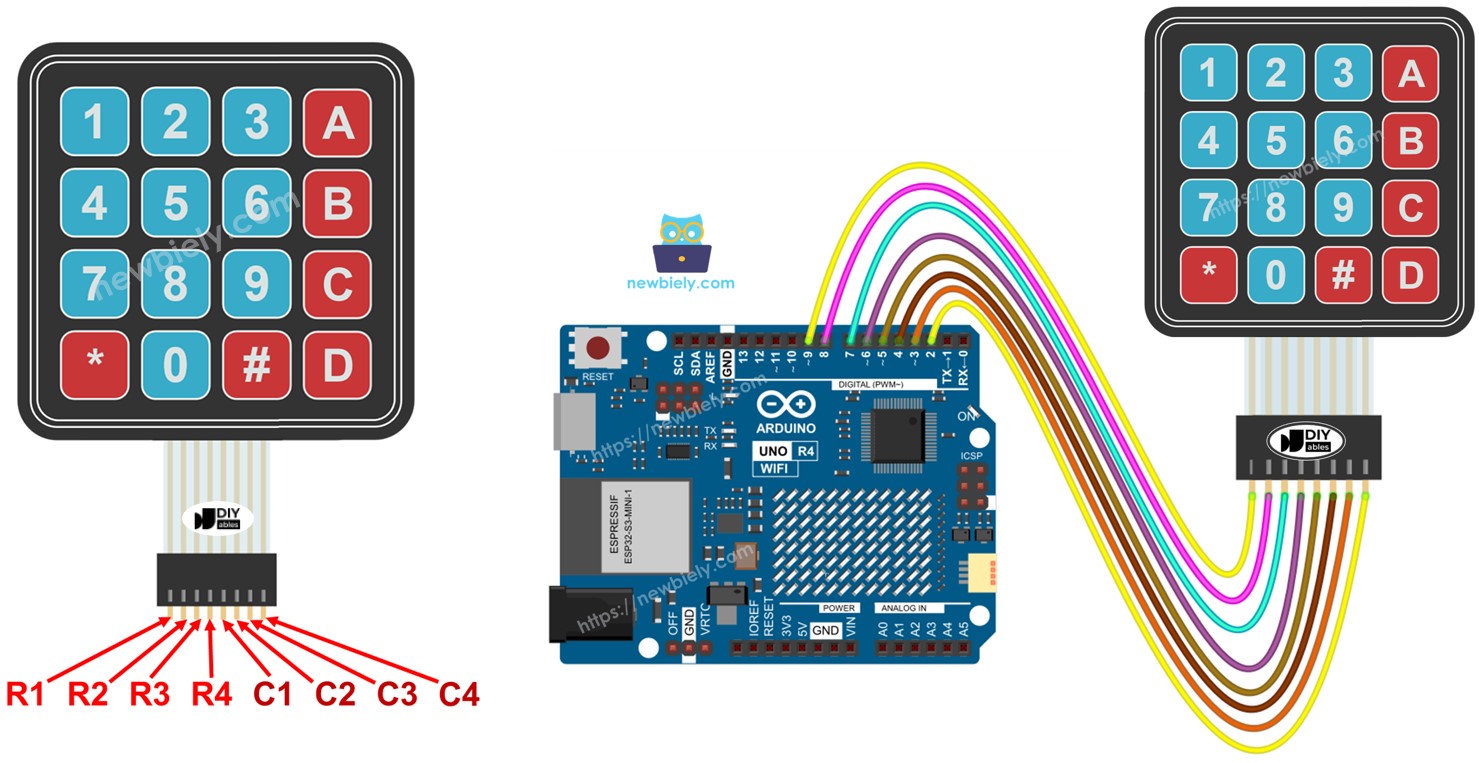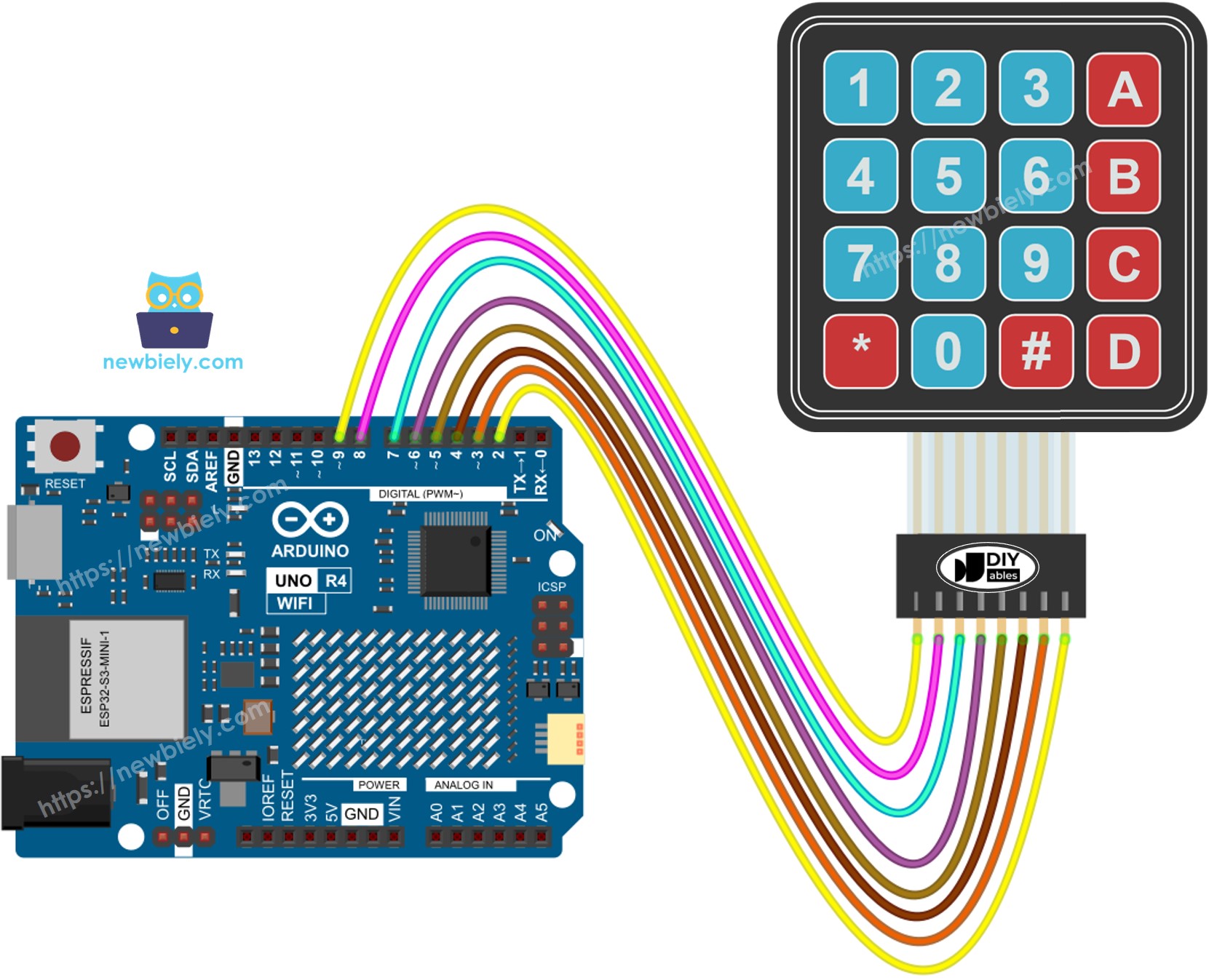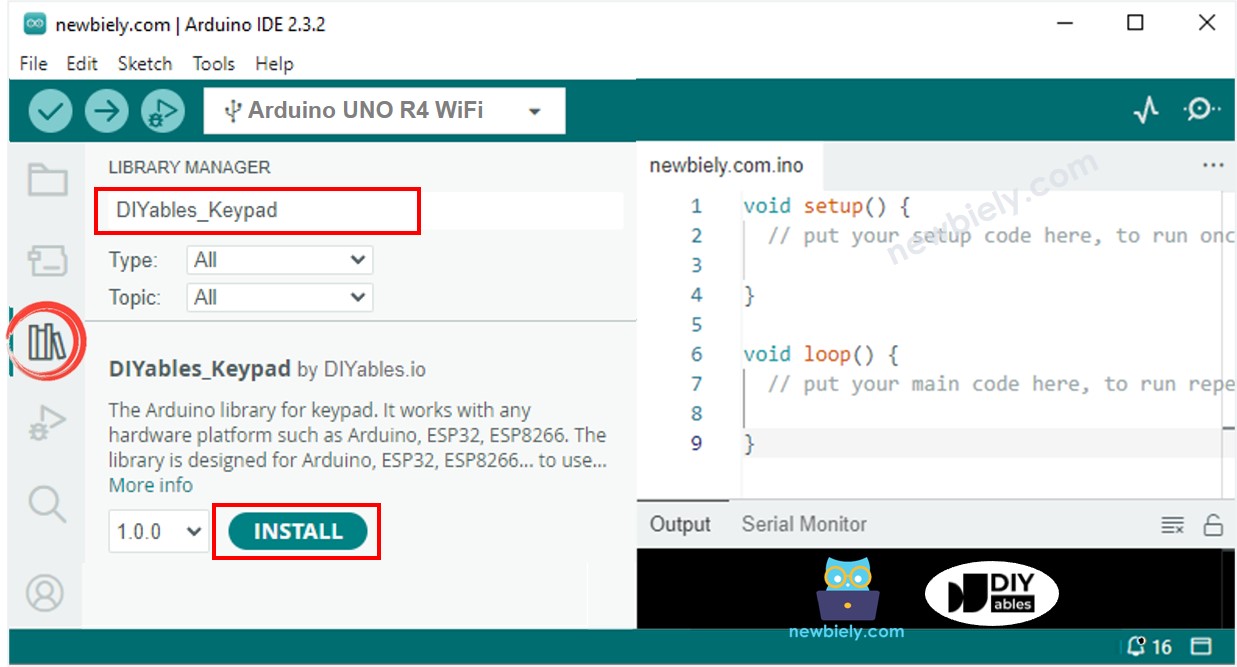Arduino UNO R4 - Keypad 4x4
This tutorial will teach you how to use an Arduino UNO R4 with a 4x4 keypad. We will cover the following steps:
- Connecting a 4x4 keypad to the Arduino UNO R4.
- Programming the Arduino UNO R4 to read which key is pressed on the keypad 4x4.
- Checking a password entered using the keypad 4x4.

Hardware Preparation
Or you can buy the following kits:
| 1 | × | DIYables STEM V4 IoT Starter Kit (Arduino included) | |
| 1 | × | DIYables Sensor Kit (30 sensors/displays) | |
| 1 | × | DIYables Sensor Kit (18 sensors/displays) |
Additionally, some of these links are for products from our own brand, DIYables .
Overview of 4x4 Keypad
The keypad has 16 membrane buttons arranged in rows and columns, known as a matrix. Each button is called a key.
Pinout
A 4x4 keypad has 8 pins, divided into two categories: rows and columns.
- 4 pins are for the rows (R1, R2, R3, R4).
- 4 pins are for the columns (C1, C2, C3, C4).

Wiring Diagram

This image is created using Fritzing. Click to enlarge image
See The best way to supply power to the Arduino Uno R4 and other components.
Arduino UNO R4 Code
Detailed Instructions
Follow these instructions step by step:
- If this is your first time using the Arduino Uno R4 WiFi/Minima, refer to the tutorial on setting up the environment for Arduino Uno R4 WiFi/Minima in the Arduino IDE.
- Connect the 4x4 keypad to the Arduino Uno R4 according to the provided diagram.
- Connect the Arduino Uno R4 to your computer using a USB cable.
- Launch the Arduino IDE on your computer.
- Select the appropriate Arduino Uno R4 board (e.g., Arduino Uno R4 WiFi) and COM port.
- Go to the Libraries icon on the left side of the Arduino IDE.
- Type DIYables_Keypad in the search box, and look for the keypad library by DIYables.io.
- Press the Install button to install the keypad library.

- Copy the code above and open it with the Arduino IDE.
- Click the Upload button in the Arduino IDE to upload the code to the Arduino UNO R4.
- Open the Serial Monitor.
- Press some keys on the keypad.
- Check the results in the Serial Monitor.
Keypad and Password
A common use of a keypad is for entering a password. In this case, we use two special keys:
- A key to start or restart entering the password. For example, the "*" key.
- A key to finish entering the password. For example, the "#" key.
The password will be made up of the other keys, excluding the two special keys. When a key is pressed:
- If the key is not "*" or "#", add the key to the password the user is entering.
- If the key is "#", check if the entered password matches the set password, then clear the entered password.
- If the key is "*", clear the entered password.
Keypad - Password Code
- Run the code provided above.
- Open the Serial Monitor.
- Enter the keys "1234BC" and then press "#".
- Enter the keys "1234A" and then press "#".
- Check the results on the Serial Monitor.
